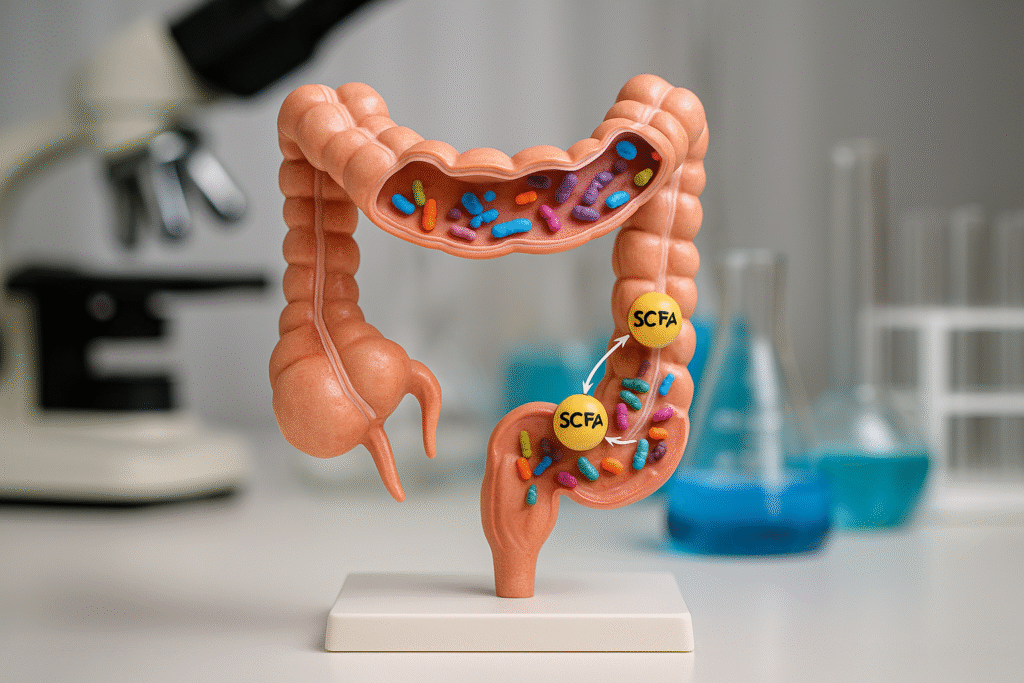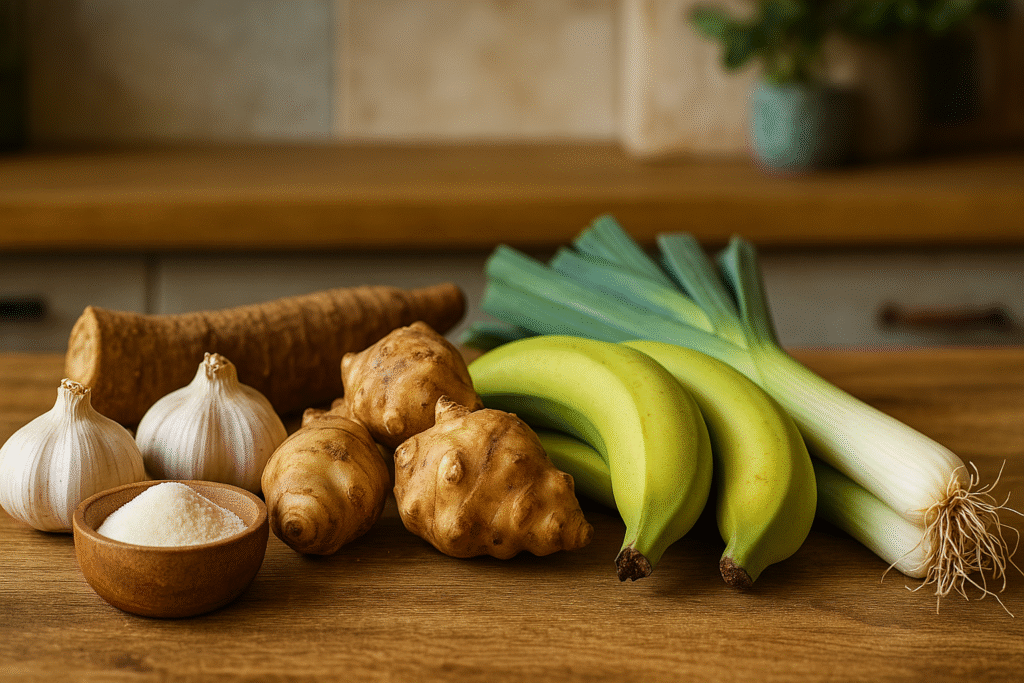From TikTok influencers to clinical dietitians, everyone in 2025 is talking about fibermaxxing—a powerful twist on the classic high fiber diet. But this isn’t just another health fad. With gut health now recognized as a cornerstone of mental clarity, immunity, and weight management, fiber is finally getting the spotlight it deserves.
In this article, we’ll explore why fibermaxxing is exploding in popularity, what the research says about its benefits, and how you can strategically increase your fiber intake for optimal results. Whether you’re battling bloating, seeking better digestion, or aiming for sustainable fat loss, this trend could transform your health from the inside out.
Let’s dive deep into the science, strategies, and foods that define the fiber-powered revolution of 2025.
What Is Fibremaxxing and Why Is It Trending?
The term fibremaxxing emerged from online health communities in late 2024 as a response to growing dissatisfaction with quick-fix diets and bloating-inducing processed foods. It’s a lifestyle approach centered on maximizing daily fiber intake—often to levels well beyond the traditional dietary guidelines. Unlike standard high-fiber diets, fibermaxxing is intentional, optimized, and often paired with gut-friendly practices like fermented foods, water cycling, and resistant starch timing.
The Origins of Fibremaxxing
While the USDA has long recommended 25–38 grams of fiber daily, most Americans consume less than 15 grams. This fiber gap has been linked to rising rates of digestive issues, obesity, and inflammatory diseases. Fibremaxxing was born from a growing body of research—and frustration—that current norms weren’t cutting it.
Health-forward circles on platforms like Reddit’s r/Nutrition and TikTok’s #GutTok began sharing extreme fiber hacks, like starting the day with psyllium fiber shots or making smoothies with flaxseed, acacia, and raw oats. By early 2025, wellness influencers began coining “fibermaxxing” to describe these routines. The term quickly caught fire.
Cultural and Social Catalysts Behind the Trend
Several converging factors in 2025 have propelled fibremaxxing into the mainstream:
- The Gut Health Boom: Books like Fiber Fueled and the increasing popularity of microbiome testing kits (e.g., Viome, Zoe) brought gut health to center stage.
- Ozempic Aftermath: As post-semaglutide users seek sustainable weight control without pharmaceuticals, fiber became a top strategy due to its satiety and blood sugar benefits.
- Mental Wellness Connection: Emerging studies show high fiber intake may reduce symptoms of anxiety and depression by feeding beneficial gut bacteria involved in neurotransmitter production.
- Climate and Plant-Based Eating: As more consumers adopt flexitarian and plant-rich diets, fiber is a natural byproduct—turning it into a celebrated metric rather than a byproduct.
✅ Expert Summary
Fibremaxxing reflects a cultural shift toward science-backed, plant-forward wellness. It’s not just about bowel movements—it’s a strategy for weight, mood, energy, and long-term disease prevention.
Top Health Benefits of Fibremaxxing
Fibremaxxing goes beyond digestive comfort—it’s a metabolic, neurological, and immunological upgrade strategy. By significantly increasing your intake of soluble, insoluble, and fermentable fibers, you can positively influence everything from blood sugar regulation to mood stabilization and body composition. Here’s how.
Optimized Gut Microbiota and Reduced Inflammation

When fiber reaches the colon, it becomes fuel for your gut bacteria—especially species like Bifidobacteria and Akkermansia muciniphila. This process, known as fermentation, produces short-chain fatty acids (SCFAs) such as butyrate, acetate, and propionate. SCFAs serve as:
- Anti-inflammatory agents, reducing intestinal permeability (“leaky gut”)
- Energy sources for colonocytes, promoting mucosal integrity
- Signaling molecules that influence appetite, insulin sensitivity, and immune modulation
📌 Did You Know?
A single 30g increase in daily fiber can boost butyrate production by up to 150%, dramatically improving gut lining health and lowering systemic inflammation (NIH, 2022).
Blood Sugar Stability and Insulin Sensitivity
Soluble fibers—like psyllium, beta-glucan, and inulin—form a viscous gel in the gut, slowing glucose absorption and blunting post-meal insulin spikes. Clinical studies show:
- Fibermaxxing can lower A1C by 0.5–1% in prediabetic individuals
- Viscous fibers increase satiety and reduce total caloric intake by 10–15% over time
- Higher SCFA levels also improve GLP-1 and PYY production—satiety hormones linked to reduced cravings
This makes fibremaxxing a critical strategy for non-pharmaceutical metabolic control.
Brain-Gut Axis Enhancement
The gut-brain axis is a two-way street. Fiber feeds gut bacteria that produce neurotransmitter precursors such as GABA and serotonin. According to a 2023 meta-analysis in Frontiers in Nutrition, high-fiber diets were correlated with:
- 22% reduction in reported anxiety symptoms
- Improved sleep scores (Pittsburgh Sleep Quality Index) by 15–20%
- Increased cognitive flexibility and memory retention in middle-aged adults
This positions fiber as an adjunctive mental health tool—especially for those avoiding pharmaceuticals.
Sustainable Weight Management
Fibremaxxing contributes to weight loss via multiple mechanisms:
- Appetite suppression through increased satiety
- Decreased caloric absorption due to fermentation
- Reduced food reward signaling—less dopamine spike from sugar/fat
A 2024 trial at Johns Hopkins found that participants increasing fiber intake by 35g/day lost 9.1 lbs more over 12 weeks compared to controls—without calorie restriction.
💡 Quick Tip
Start your day with a 10g fiber smoothie (chia, flaxseed, psyllium, and banana). It feeds your gut, stabilizes energy, and keeps hunger at bay until lunch.
How to Start Fibremaxxing: Practical Guidelines for 2025
Successfully adopting fibremaxxing requires more than tossing extra kale into your salad. Because increasing fiber too rapidly can cause bloating or digestive distress, the transition must be deliberate, structured, and diversified across fiber types. Here’s how to begin like a pro.
Understand the Three Types of Fiber
Each fiber type plays a unique role in your gut ecosystem and metabolic signaling. A successful fibremaxxing strategy includes:
- Soluble fiber (e.g., psyllium, oats, beans): Forms gel-like substances, lowers cholesterol, slows glucose absorption.
- Insoluble fiber (e.g., wheat bran, veggies): Adds bulk to stool, accelerates transit time, prevents constipation.
- Fermentable fiber (e.g., inulin, pectin, resistant starch): Feeds gut bacteria, produces SCFAs like butyrate.
✅ Expert Summary
An optimal fibremaxxing plan targets all three fiber types to balance bowel regularity, microbiome diversity, and metabolic benefits.
Gradual Loading Protocol for Digestive Adaptation
Jumping from 10g to 40g of fiber overnight can backfire. Instead, follow this progressive model:
| Week | Daily Fiber Target | Strategy |
|---|---|---|
| Week 1 | 20g | Add chia pudding, switch to whole grains |
| Week 2 | 25g | Add a fiber supplement (e.g., psyllium) |
| Week 3 | 30g | Introduce legumes and cruciferous vegetables |
| Week 4 | 35–40g | Layer in resistant starch (cooled rice, green banana flour) |
Stay hydrated—fiber draws water into the intestines. Aim for 2.5 to 3 liters of water daily.
Modern Tools to Track and Personalize
In 2025, fibremaxxing is tech-enhanced. Use these digital tools to optimize your intake:
- ZOE app: Microbiome-driven fiber recommendations
- MyFitnessPal: Tracks daily fiber macros
- Glucose monitors (e.g., Levels): See how fiber impacts your blood sugar
- Gut testing (e.g., Viome, Ombre): Identify fiber gaps by analyzing microbiota profiles
These tools can help you bioindividualize your fiber strategy—maximizing benefits while avoiding gas, cramps, or FODMAP sensitivity.
Build a Daily Fibremaxxing Meal Blueprint

Here’s a basic template for a 35g fiber day:
- Breakfast: Smoothie with chia, flax, oats, berries (12g)
- Lunch: Lentil and quinoa bowl with veggies and avocado (10g)
- Snack: Apple with almond butter + psyllium drink (6g)
- Dinner: Stir-fry with tofu, broccoli, brown rice, and garlic (7g)
Rotate sources weekly to diversify microbiota and prevent tolerance plateaus.
What the Research Says: Fibremaxxing and Clinical Outcomes
Fibremaxxing isn’t just a social media trend—it’s grounded in a growing body of peer-reviewed research linking high fiber intake to enhanced metabolic health, reduced chronic disease risk, and even improved mental function. Let’s examine the most compelling clinical data available in 2025.
Cardiometabolic Benefits Confirmed by Meta-Analyses
A landmark 2023 meta-analysis published in The Lancet (source) reviewed 185 prospective studies and 58 clinical trials.
- People who consumed 25–29g of fiber daily had a 15–30% lower risk of cardiovascular disease, stroke, type 2 diabetes, and colorectal cancer.
- Each additional 8g of fiber intake per day lowered all-cause mortality by 7%.
- Soluble viscous fibers showed significant reductions in LDL cholesterol (up to 0.3 mmol/L).
📌 Did You Know?
Psyllium husk, a popular fibremaxxing supplement, has FDA recognition for lowering cholesterol and reducing the risk of heart disease.
Microbiome Remodeling and Gut Immune Activation
Research from the American Gut Project and a 2024 clinical trial from Stanford University confirmed that diets rich in fermentable fiber significantly increase microbial diversity and SCFA production. Observations included:
- Up to 50% increase in Faecalibacterium prausnitzii and Bifidobacteria—both associated with anti-inflammatory effects
- Enhanced IgA antibody response in mucosal immunity
- Improved gut-brain barrier integrity, lowering neuroinflammation markers
This supports fibremaxxing as a long-term strategy for immune resilience and mental wellness.
Mental Health and Cognitive Resilience
In 2024, a double-blind RCT published in Nutrients examined 120 adults with subclinical anxiety. After 8 weeks on a high-fiber diet (38g/day), the treatment group showed:
- 26% reduction in anxiety scores (GAD-7)
- Improved executive function on Stroop and Trail Making tests
- Lower circulating cortisol and IL-6—key biomarkers for stress and inflammation
This reinforces fiber’s role in the gut-brain axis and positions fibremaxxing as a credible tool in adjunct mental health therapy.
Weight Loss and Satiety Evidence
Clinical support for fiber’s impact on weight control includes:
- A 2022 NIH-funded study found that participants on a 35g/day fiber diet lost more visceral fat and had lower fasting insulin compared to calorie-matched controls.
- Resistant starch was linked to enhanced fat oxidation and lower hunger scores.
- Fiber-intake groups also showed increased GLP-1 and PYY levels—hormones that reduce appetite and support glycemic control.
✅ Expert Summary
Multiple clinical trials confirm that fibremaxxing improves lipid profiles, insulin sensitivity, immune function, mental clarity, and sustainable fat loss—with no side effects other than potential initial bloating.
Best High Fiber Diet Foods for Fibremaxxing in 2025
True fibremaxxing isn’t just about hitting a fiber number—it’s about strategically consuming diverse fiber types to nourish the entire gut ecosystem, regulate metabolism, and support immune signaling. Below are the most effective and functional fiber-rich foods in 2025, categorized by fiber type and synergistic benefits.
Soluble Fiber Superstars for Metabolic Balance
Soluble fibers dissolve in water to form viscous gels, slowing gastric emptying, modulating blood sugar, and trapping LDL cholesterol for excretion.
- Psyllium Husk: 5g per tbsp. A foundational supplement for fibremaxxing; improves satiety, reduces glucose spikes.
- Oats (Steel-Cut or Rolled): Rich in beta-glucan, which lowers cholesterol and improves insulin sensitivity.
- Apples and Citrus Fruits: Contain pectin, linked to fat metabolism and butyrate production.
- Legumes (Lentils, Chickpeas, Black Beans): Soluble fiber + resistant starch combo; excellent for gut fermentation and glycemic control.
💡 Quick Tip
Pair soluble fiber with healthy fats (e.g., avocado, nuts) to slow digestion further and support hormone balance.
Insoluble Fiber for Bowel Movement and Detox
Insoluble fiber adds bulk to stool and accelerates transit time, preventing constipation and reducing toxin reabsorption.
- Cruciferous Vegetables: Broccoli, Brussels sprouts, and kale promote detox and bind estrogen metabolites.
- Whole Grains: Brown rice, bulgur, and amaranth are dense in insoluble fiber with low glycemic load.
- Nuts and Seeds: Almonds, walnuts, sunflower seeds; promote bowel regularity and contain prebiotic compounds.
- Wheat Bran: A classic tool for constipation management; fibermaxxers often blend it into smoothies or oats.
📌 Did You Know?
Insoluble fiber doesn’t ferment, but its bulking action indirectly enhances microbiome diversity by pushing fermentable fibers deeper into the colon.
Fermentable & Prebiotic Fiber for Gut Ecosystem Support

These fibers are microbiota-accessible carbohydrates (MACs) that directly feed keystone bacteria and modulate immune function.
- Inulin and Fructooligosaccharides (FOS): Found in chicory root, garlic, onions, leeks. Highly fermentable; feed Bifidobacteria and Lactobacilli.
- Green Bananas and Potato Starch: Resistant starch that survives digestion and becomes butyrate fuel.
- Jerusalem Artichokes: One of the highest natural sources of inulin—excellent for butyrate synthesis.
- Acacia Fiber: Gentle on the gut; encourages microbial balance without gas or bloating.
✅ Expert Summary
To truly fibremaxx, include a mix of fermentable and non-fermentable fibers across each day. Diversity = resilience.
Functional Fiber Combos and Recipes for 2025
Maximize benefits with synergistic meals that stack different fiber types:
- Morning Elixir: Warm water + lemon + psyllium husk + aloe vera (soluble + gut soothing)
- Lunch Bowl: Lentils + quinoa + sautéed kale + tahini + garlic (soluble, insoluble, fermentable)
- Afternoon Snack: Apple + almond butter + inulin powder (prebiotic + fiber-fat synergy)
- Dinner Plate: Wild rice + steamed broccoli + grilled tofu + acacia fiber sprinkle
Rotate your ingredients weekly to avoid tolerance and ensure bacterial diversity stimulation.
Conclusion
In a wellness world saturated with gimmicks and fads, fibremaxxing stands out as a powerful, science-backed lifestyle shift. By deliberately increasing and diversifying your fiber intake, you can radically transform your gut microbiome, improve metabolic function, sharpen mental clarity, and even lose weight naturally—without restriction or pharmaceuticals.
Whether you’re new to dietary fiber or ready to take your gut health to the next level, fibremaxxing in 2025 is not just relevant—it’s essential.
📌 Main Takeaways
- Fibremaxxing is a strategic, science-driven approach to maximizing fiber intake for gut, brain, and metabolic health.
- Three key fiber types—soluble, insoluble, and fermentable—must be balanced for optimal results.
- Gradual loading and hydration are critical to avoid digestive distress and enhance adaptation.
- Clinical evidence supports fibremaxxing’s role in reducing cholesterol, stabilizing blood sugar, improving mental health, and supporting weight loss.
- Top-performing foods include oats, legumes, cruciferous vegetables, prebiotics like inulin, and resistant starches.







